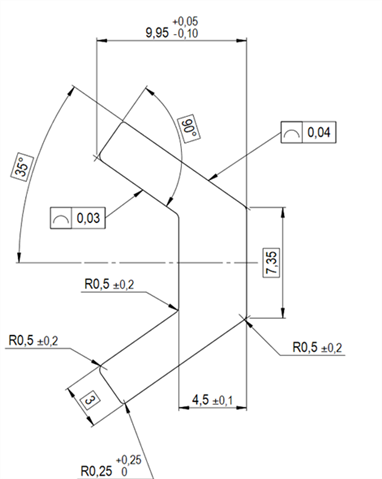 Hello all
Hello all
i have these profile bars (about 2.2meters long), and this is how the profile looks.
It also has a straightness callout along the entire length
I need to measure em and i know how to measure profile, i basicailly just do a bunch of vectorpoints, construct a scan set and evaluate profile.
For the straightness i guess i just measure a line across the entire lenght and evaluate straightness
But i dont really know how to align the part. Ive taken a primary plane on the end face of the bar and then measure a line and offset angle 35.
But the ends of the bar are cut raw, and they re not really good feature to use for alignment.
How would i go about to align this part to evalute the staightness n profile?
TY ALL <3
